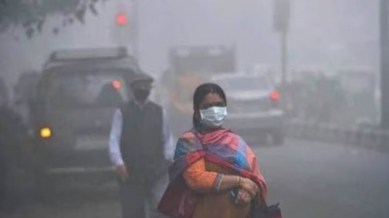Stay updated with the latest - Click here to follow us on Instagram
Chandigarh needs a transformative, science-driven strategy to combat air pollution: PGI expert
Air pollution is now a recognised risk factor for heart disease, stroke, respiratory illnesses, diabetes, and even cognitive decline.

As part of International Day of Clean Air for Blue Skies week, the Department of Community Medicine and School of Public Health, PGI, focused on this year’s United Nations theme: “Run for Clean Air”, which highlights the urgency of collective and sustained action to combat air pollution for a healthier and more resilient future.
Prof Ravindra Khaiwal highlighted that “Run for Clean Air” represents the ongoing, collective responsibility to combat air pollution through sustained action. He emphasised practical, science-based solutions such as promoting clean and renewable energy, improving public transport, reducing vehicular emissions, adopting sustainable urban planning, and managing waste responsibly. He encouraged individuals to take simple but impactful steps like carpooling, using bicycles, planting trees, and reducing indoor pollutants. A session on breathing exercises was conducted to highlight the vital role of clean air in maintaining lung health and overall well-being.
Air pollution is now a recognised risk factor for heart disease, stroke, respiratory illnesses, diabetes, and even cognitive decline. Chandigarh in 2020 recorded 121 days of good air, but by 2024, this number had collapsed to just 22 days, said Prof Khaiwal. Even more concerning was the rise in poor-to-severe air quality days, 91 in 2024 alone, with ‘severe’ days appearing for the first time. The sharp increase in very poor days, he added, directly exposes children, pregnant women, the elderly, and those with existing conditions to serious health risks. Incremental approaches are insufficient, and Chandigarh needs a transformative, science-driven strategy and the commitment of various stakeholders to clean air.
“Pollution mapping can reveal hotspots in real-time, allowing targeted interventions. Artificial intelligence and satellite imagery can automatically detect construction dust, industrial emissions, and crop or waste burning, especially during early winter, when the air pollution level rises in the Indogangatic region, also affecting the city’s air quality. Smart sensors on major roads can track high-polluting vehicles and generate automated challans, ensuring accountability. Mobile applications such as SAMEER empower citizens to report pollution sources with geotagged photos. Improving the quality of roads and ensuring timely traffic diversion is needed. Filling potholes with soil or construction waste only added to the resuspension of the dust,” he said.
Chandigarh, he believes, can no longer be managed with a city-specific policy, but it must consider the Tricity, including Mohali and Panchkula. There is a need to improve fund utilisation and invest in nature-based solutions, such as large-scale urban greening, bio-filters, sustainable transport infrastructure, and low-emission zones. Globally, cities are adopting electric mobility, decentralised renewable energy, green building codes, urban green buffer zones, and data-driven air quality forecasting systems; Chandigarh should not lag.